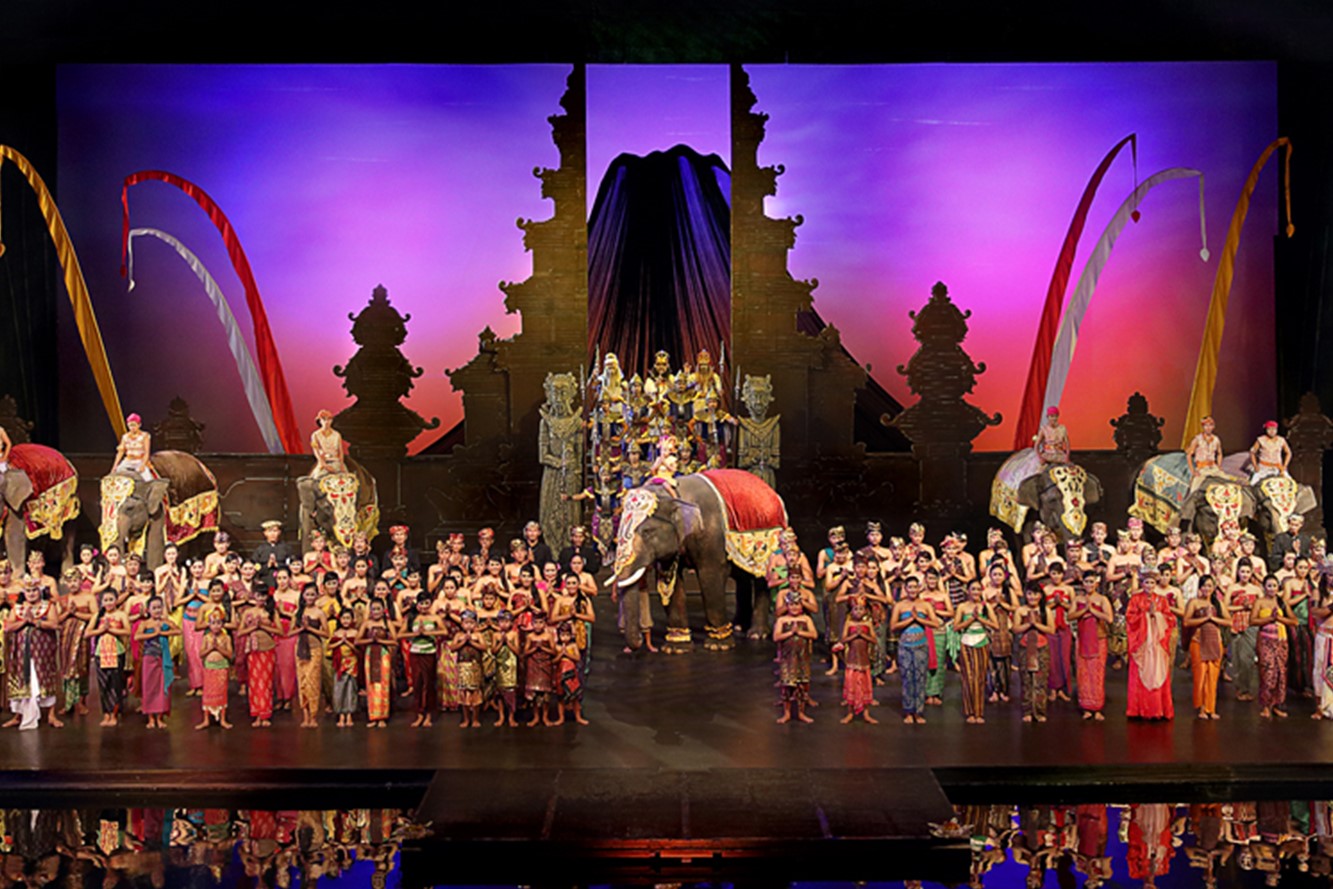
In 2014, I had the pleasure of participating in a cultural performing arts exchange in Bali, Indonesia, as part of the East15 Acting School Directing MFA program. As a working director for many years prior to my MFA, to say that my time in Bali influenced my practice would be an understatement.
This fall, I was able to return to Bali to develop future collaborative pathways. My host for this trip was noted Wayang dalang (shadow puppeteer) Professor I Nyoman Sedana. I would also work with his students in a workshop exercise researching cross cultural exchange.
Due to a historical tragedy and a tremendous act of bravery by Balinese leadership in colonial times, the Balinese society was protected from the cultural repression commonly associated with European colonization. As a result, many of the performing arts practices reach back over a thousand years.
I Made Sidia is an acclaimed artist and innovator in the Balinese Performing Arts. A fourth-generation puppeteer from a family of dalang and the son of famed puppeteer Jero Dalang, he grew up surrounded by the arts. He has collaborated in many national and international performances such as the “Theft of Sita” and has toured extensively across the U.S., Europe, Australia and Asia. He is a permanent member of the puppetry teaching team at ISI Denpasar and the Artistic Director of Sanggar Paripurna.
Founded in 1990 by multi-talented artists from the village of Bona, Blahbatuh, and I Made Sidia’s father, Sanggar Paripurna covers a wide range of arts, such as puppetry, puppet building and creation, percussion and music, dance, mask and other performing arts, the art making offerings, and more. Since its inception, the studio has been dedicated to the preservation, development and creation of art and culture of Bali. The company has a special focus on developing the artistic talents of youth who have dropped out of school or left school but have not yet joined the workforce.
The first was the story of “The Floating Subadra” from the Mahabharata. Conceived by my host, Professor I Nyoman Sedana, in a new three dimensional rod puppetry Wayang Golek. The project was developed with support of the ISI Denpasar puppetry department and funded by the P2S (research-based Innovative production) of the institute.
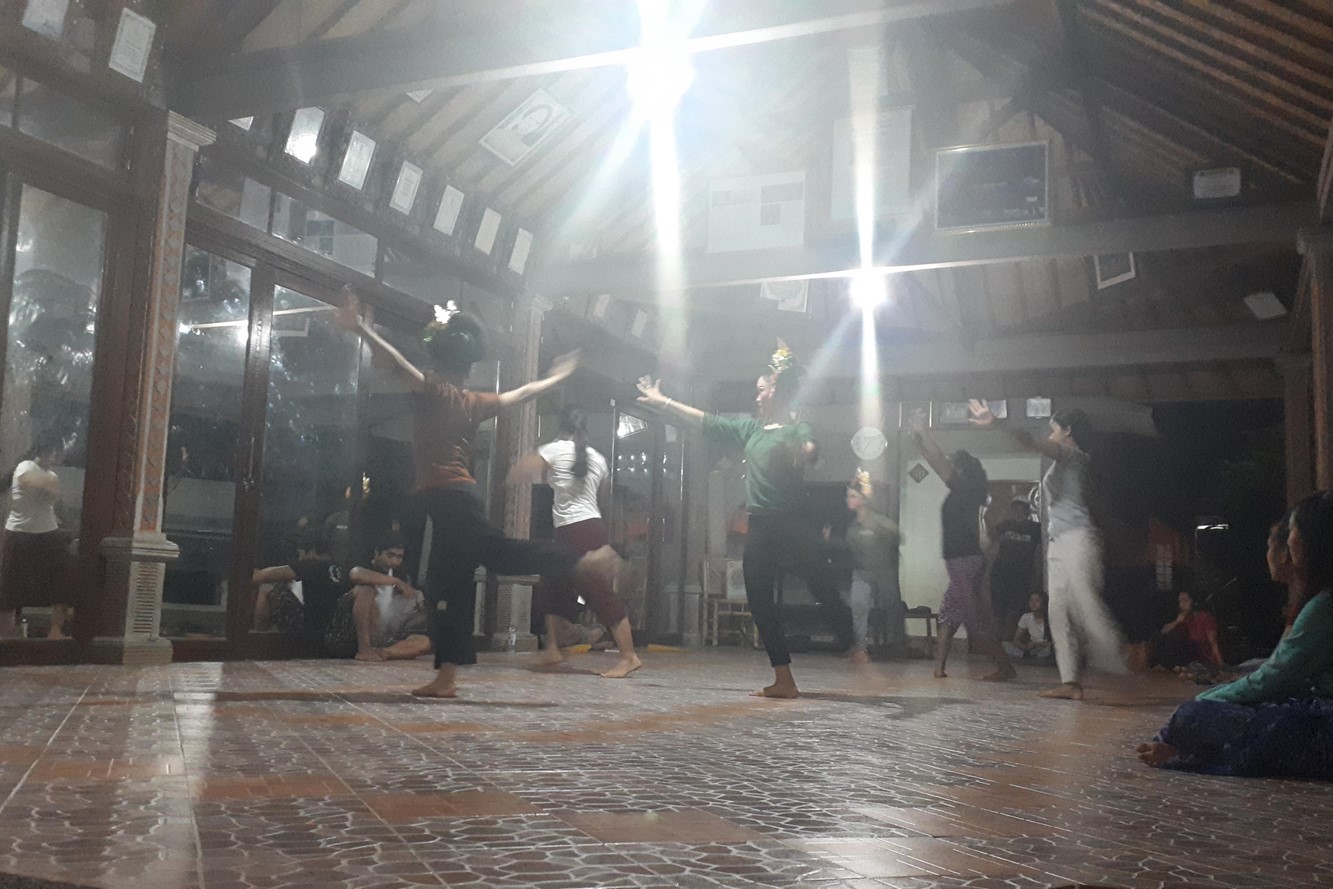
The performance took place at a temple ceremony following prayers and offerings. The playing space was a roofed open compound in the temple courtyard, and I was delighted to find a number of the emerging artists I was working with were participating in the performance. We ate dinner amongst the unpacked puppets, the various dancers in traditional costume on their phones, and children running around in monkey costumes. Since Balinese performances often don’t have a set start time, we waited for prayers and blessings to finish.
A crowd of all ages gathered around the playing area. The older children grabbed the front space on the platform’s stairs in the front or watched the artists working from the sides. The adults stood in the courtyard with babes in arms and smaller children on their shoulders. Balinese performances are often a “Total Theater” where multiple forms or disciplines are part of the experience. “The Floating Subadra” was a striking fusion of shadow puppetry, large rod puppetry, projection, dance and movement.
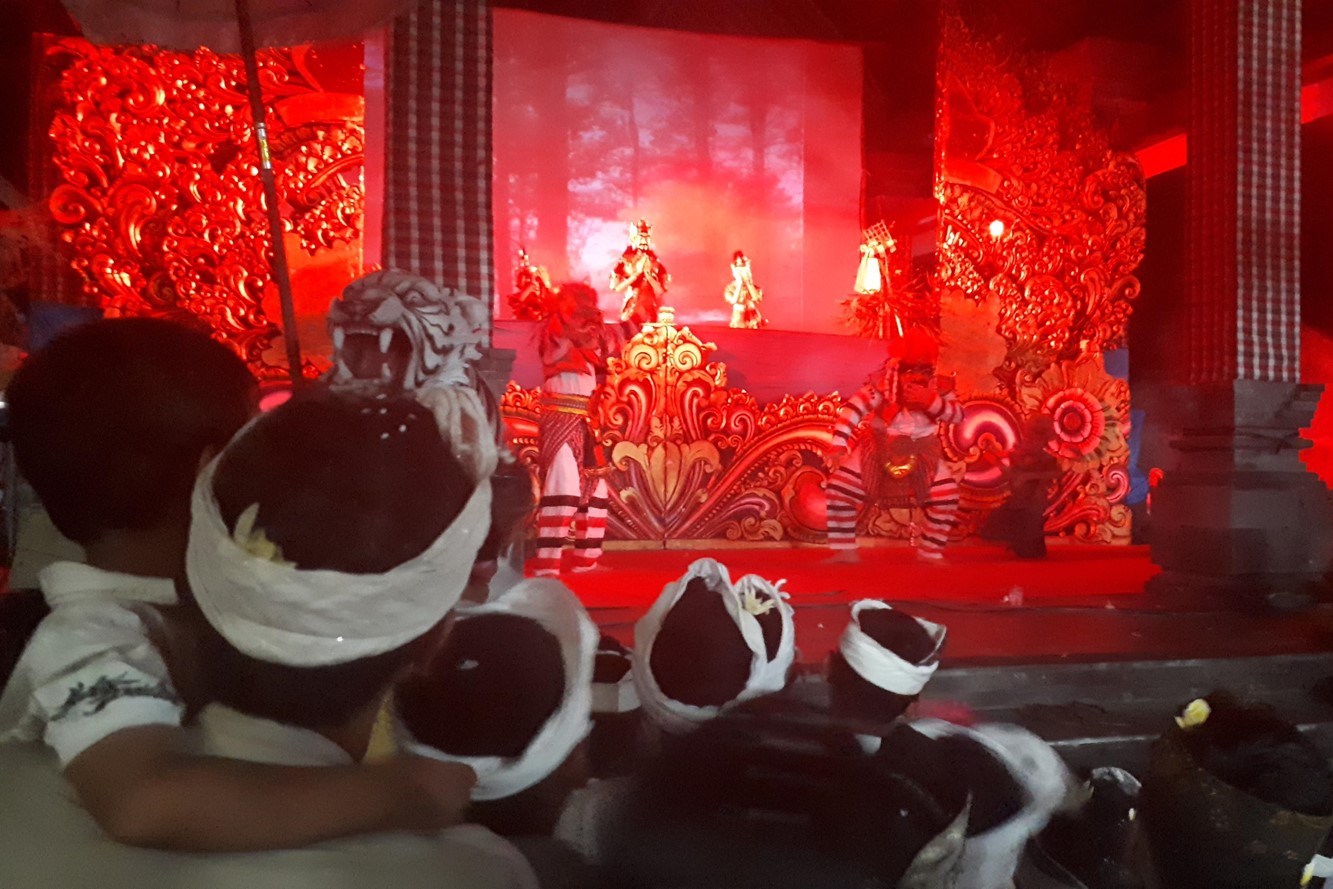
Most stories told in the Balinese Performing Arts are drawn from the Indian epics the Ramayana and the Mahabharata. Other sources of content in the performing arts include Balinese and Javanese chronicles, legends, and folktales and stories from China. Stories are often selected for their contemporary resonance and infused with social commentary.
Subadra, the wife of the hero Arjuna, is assaulted and murdered by Aji Maya Panglimunan. With the powers of invisibility, he vanishes. Subadra’s brother, Kresna, sets a trap for the culprit by floating her body down the Yamuna River.
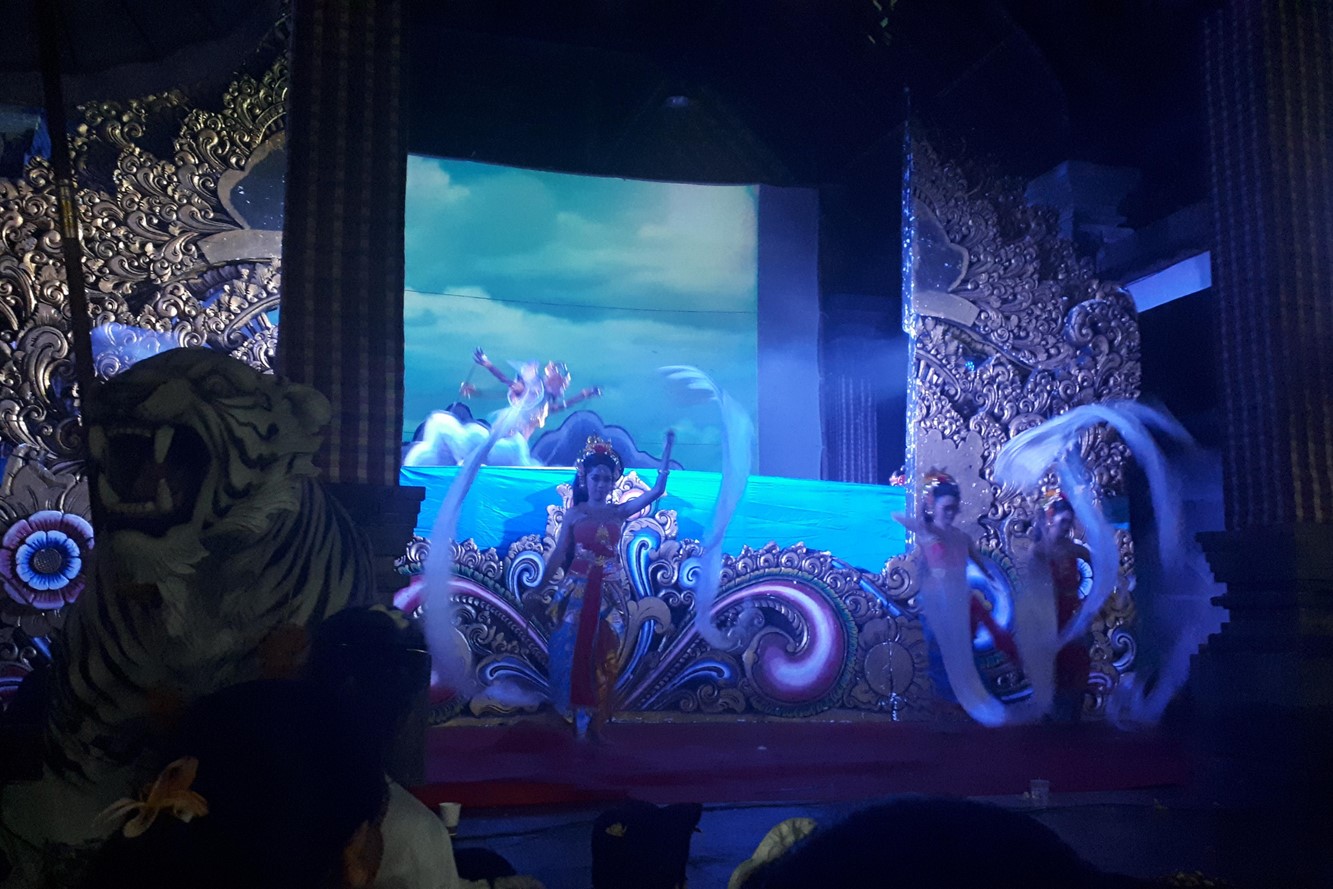
The hero Ghatotkacha, who can fly, monitors the body from the sky. Antareja, Gatutkaca’s unknown half-brother, discovers Subhadra and brings her back to life with magic powers he received from his grandfather, the Naga (snake) God Ananta Boga.
Gatutkaca attacks Antereja, believing him to be the murderer. The two heroes, not knowing they are brothers, battle. The revived Subadra stops their fight and reveals himself and their brotherhood is revealed.
The second of I Made Sidia’s projects I saw was the Bali Agung Show at the Bali Safari Park.
“It is the largest purpose-built indoor theatre in Indonesia.” He tells me as we walk backstage past racks of costumes, enormous puppets and an indoor temple area for the artists.
The Bali Agung is an epic spectacle of the story of King Jaya Pangus. The production features 180 performers, musicians and dancers in a fusion of traditional Balinese and contemporary western theatrical arts. Balinese Performing Arts in the show included puppetry, dance and gamelan. The western practices included large scale musical and circus arts such as aerial dance. Plus, there were at least 4 elephants and even a couple flocks of birds.
King Sri Jaya Pangus, falls madly in love with Kang Ching Wie, a daughter of a Chinese merchant. They defy traditional law and marry. The royal couple move their palace to Balingkang, from the words “Bali” and “Kang” and their kingdom flourishes. However, without blessing from the high priest, the couple are childless.
Frustrated, king Jaya set out on a pilgrimage to the temple of Mt. Batur. There he meets and is infatuated by the goddess of the lake, Dewi Danu. Together they have a son. His queen, Kang Ching Wei leaves the kingdom in search of her husband and finds him with the goddess. Betrayed, the goddess Dewi Danu destroys them both.
The long history of trade and exchange between China and Bali dates to the bronze age. Ancient Chinese coins (or replicas) with square holes and Chinese characters can be found all over the island and are necessary for many rituals and offerings.
According to “Performance in Bali” by Leon Rubin and I Nyoman Sedana, “the Balinese people generally welcome, rather than reject, foreign influences and in some cases adopt them within their own sensibilities.”
That doesn’t mean there aren’t, like anywhere else, conservative artistic, religious and political viewpoints wary of western or other influences; or that there isn’t a concern over potential loss of Balinese culture to globalisation.
What is also notable about his work is he seeks to engage his community by including them in it. Artists of all ages train at his studio Sanggar Paripurna and when they are ready, he includes them in his shows. Ages range from children to adults, the highly trained established professionals, the emerging artists, and the next generations of teens and youth. Currently the studio has about 400 members of all ages, professions and practices.
In an interview with Jakarta Post he said “My goal is to give more opportunity to young people to build a respect for our culture. If that does not occur, I worry they will run in another direction.”
After the performance, we sat crossed legged against the wall a large white green room as his artists ate their early dinner chatting amongst each other.
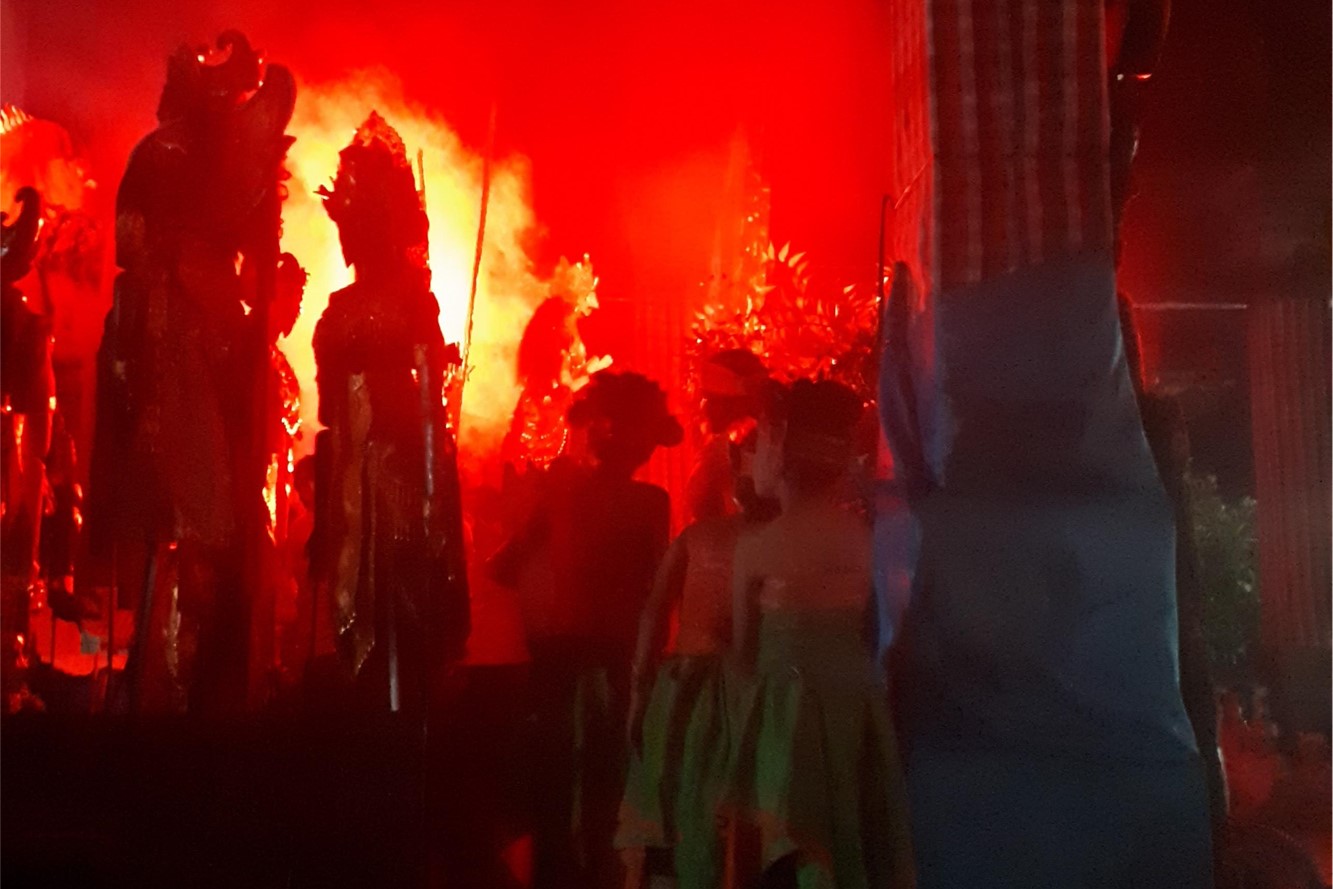
“My whole family is in the show.” He says with a smile, “My wife is in it, my brother, the whole village.”
He spoke passionately about spectacle and how Balinese artists could provide the same spectacular experiences of the large theatres of America, China or Australia but in a Balinese way.
The tag line on the Sanggar Paripurna web page reads “let us preserve our arts and culture”.
Spectacle is a form I Made Sidia uses to share his island’s stories and culture for local youth through participation, local communities through temple performances, other cultures through main stage production and touring, all the while preserving his island’s culture by looking forward to new ways.
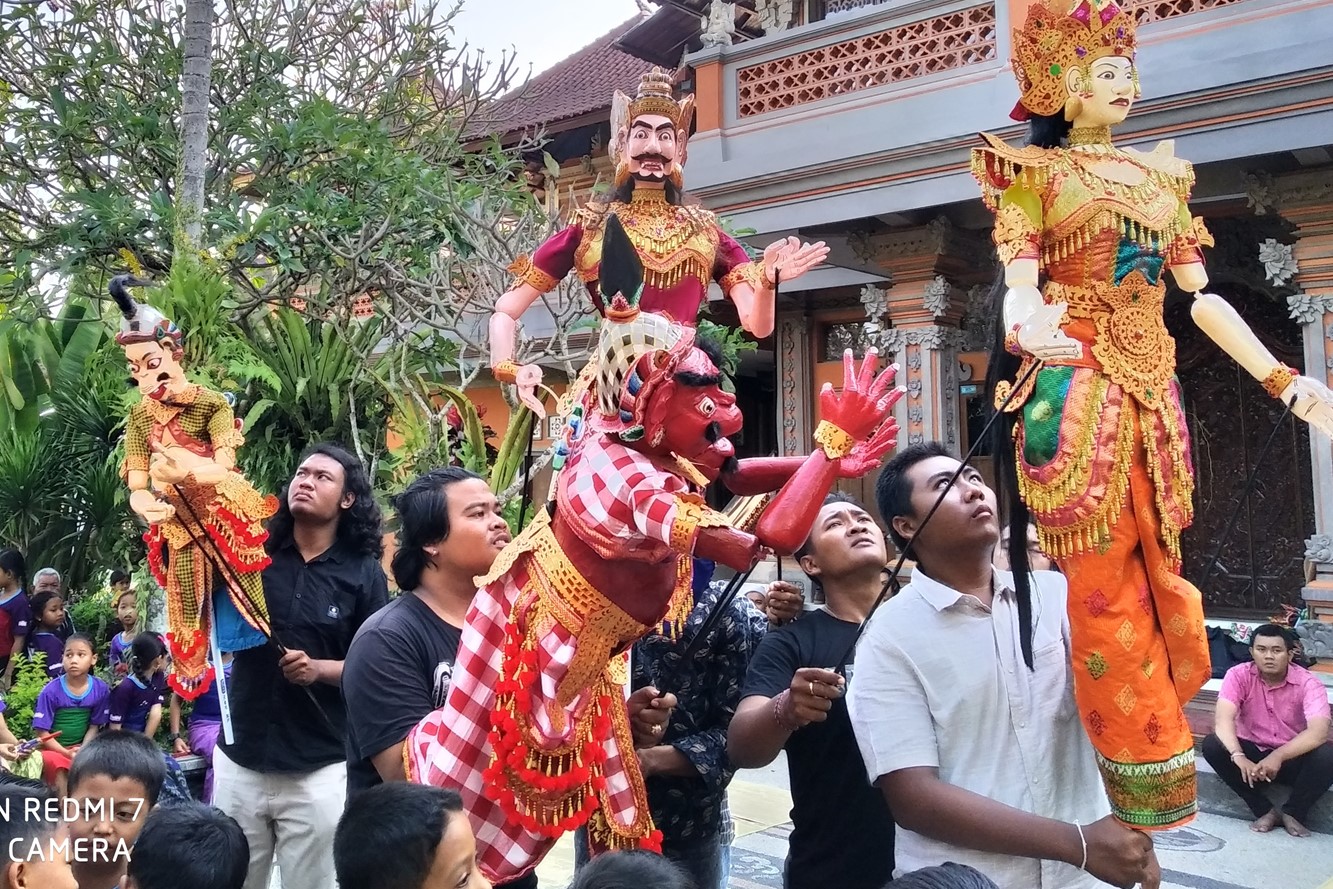
In Search of Taksu: Cross Cultural Explorations in Bali and Art & Power of Change
In Search of Taksu 2: Creation and Community in Balinese Performing Arts


Jack (he, him) is an award-winning devisor, director, translator, and creative producer whose work and practice have taken him across Canada, Europe, the United Kingdom, and around the world. Projects have ranged from contemporary devising, multi-disciplinary, cross-cultural, and multi-lingual experiences to new works & texts, contemporary approaches to classical theatre and main stages. Shows under his direction have garnered over thirty theatre award nominations with many wins. He trained at leading international theatrical institutions including Circle in the Square (NYC, USA), GITIS The University of Performing Arts (Moscow, RU), ISI Indonesian Institute of the Arts (Bali, INA) and received his Masters in Fine Arts from the renown East 15 Acting School and University of Essex (London, UK).
Read Full Profile© 2021 TheatreArtLife. All rights reserved.

Thank you so much for reading, but you have now reached your free article limit for this month.
Our contributors are currently writing more articles for you to enjoy.
To keep reading, all you have to do is become a subscriber and then you can read unlimited articles anytime.
Your investment will help us continue to ignite connections across the globe in live entertainment and build this community for industry professionals.